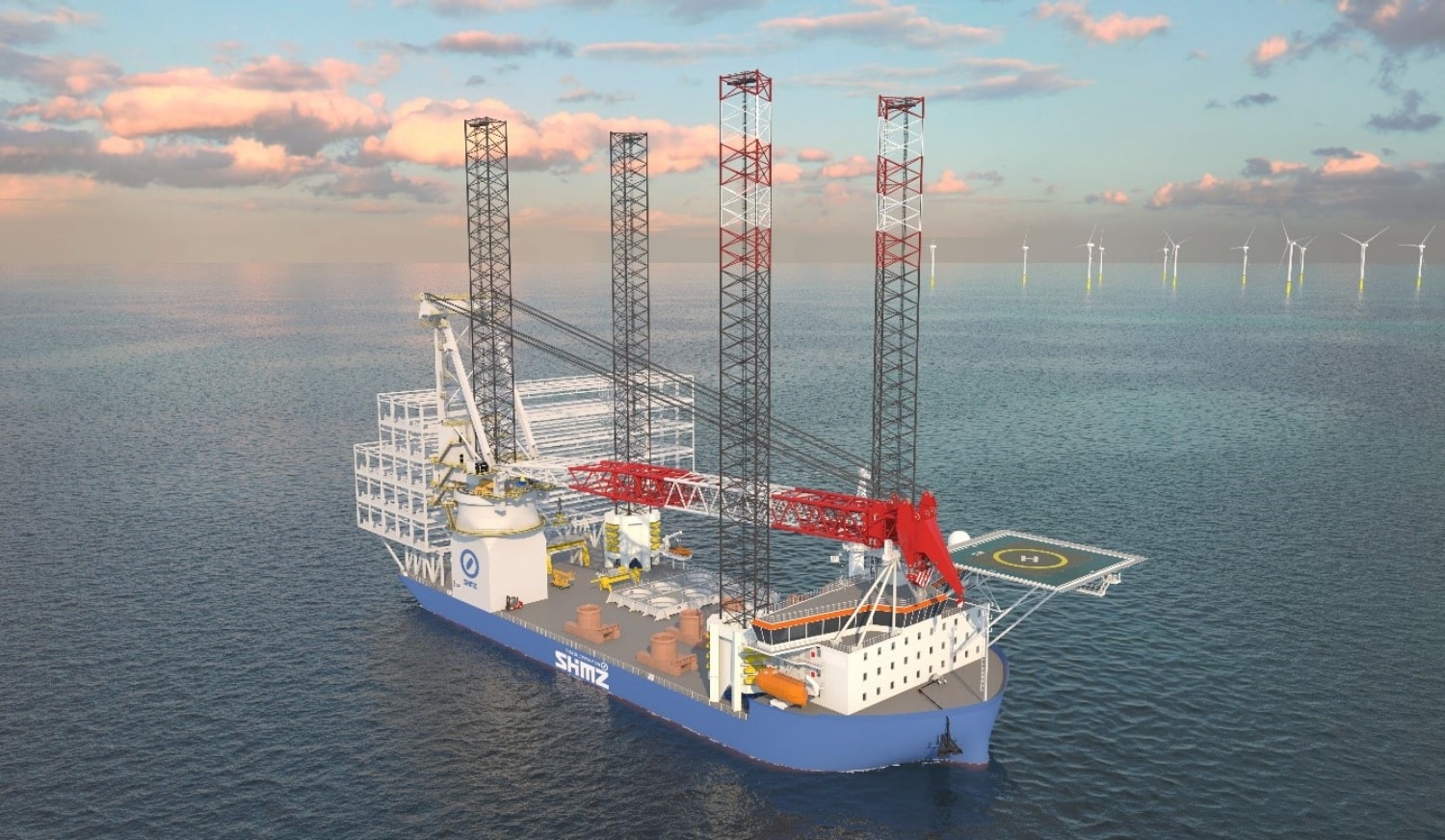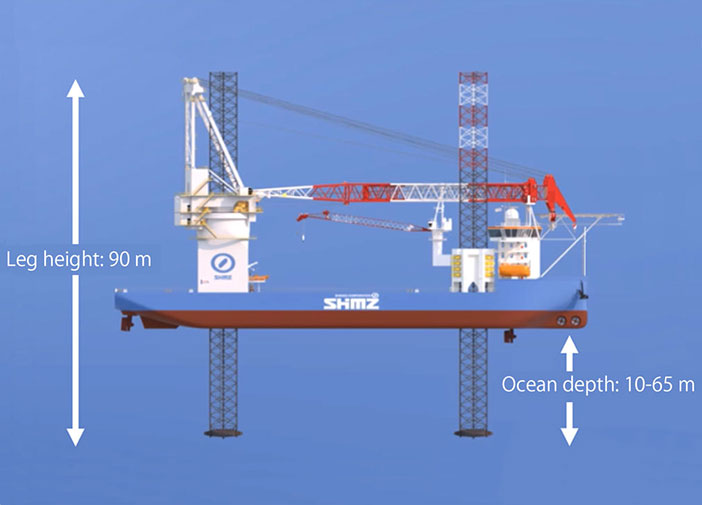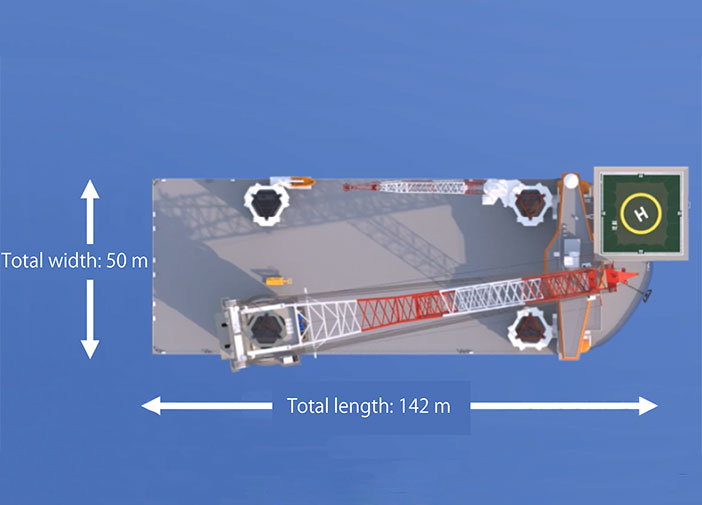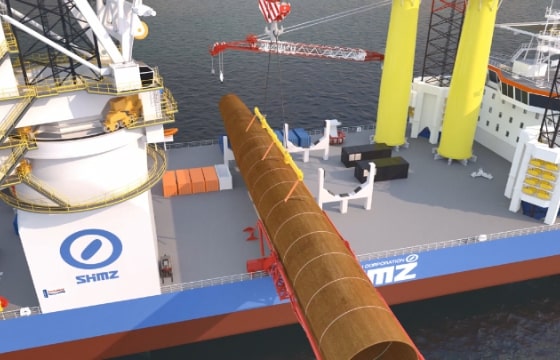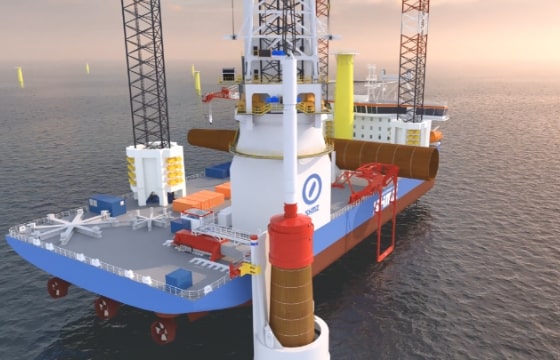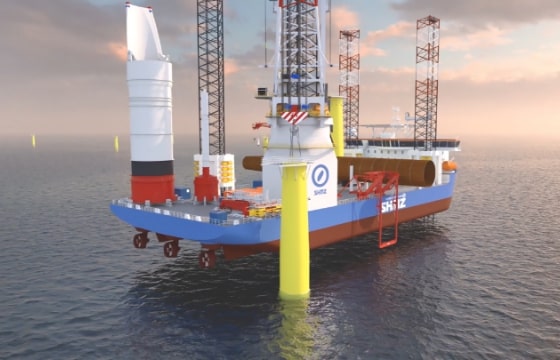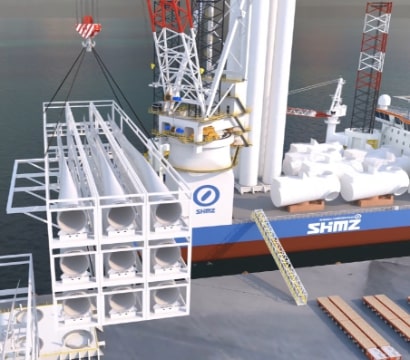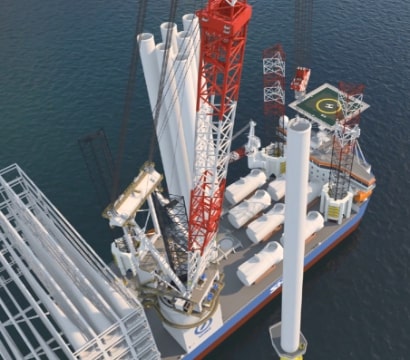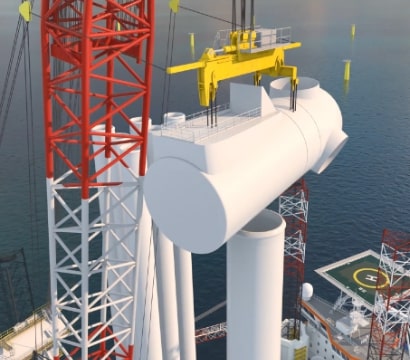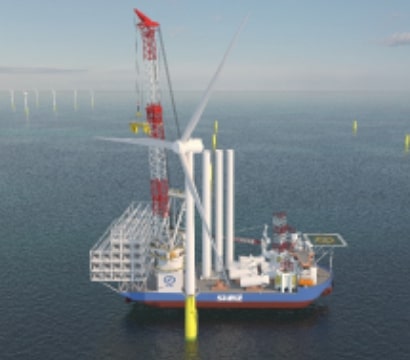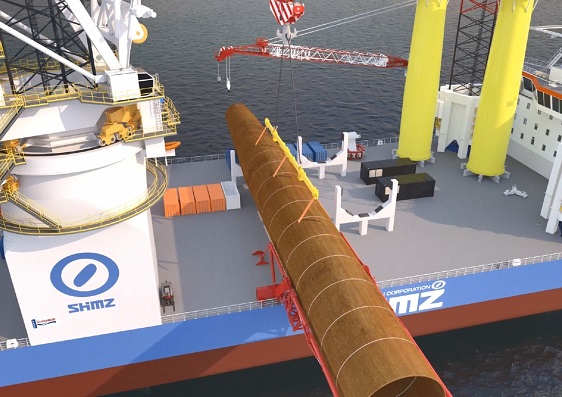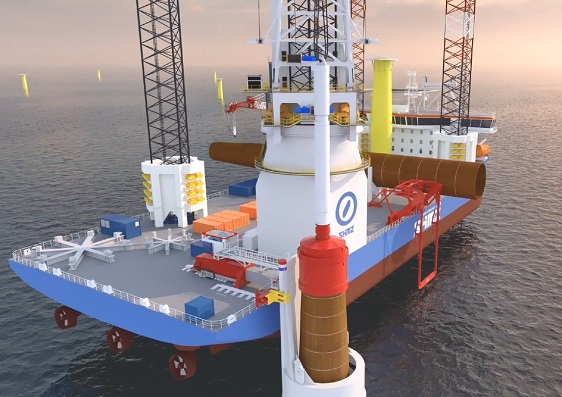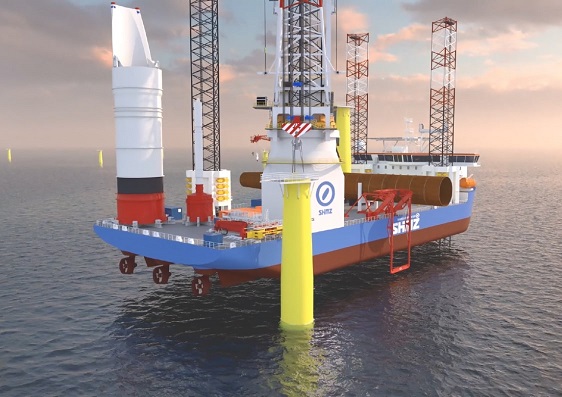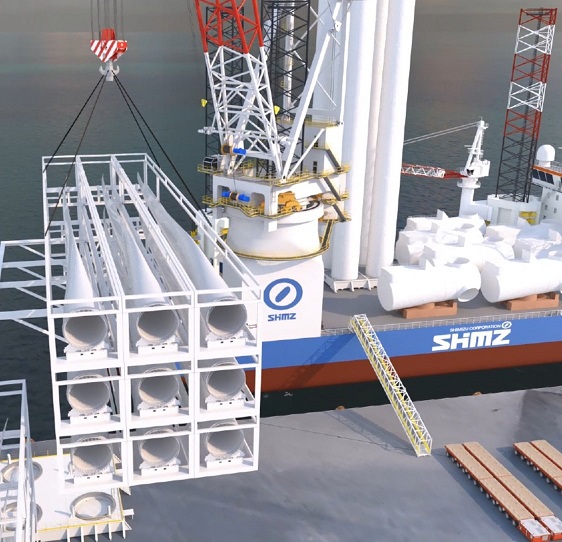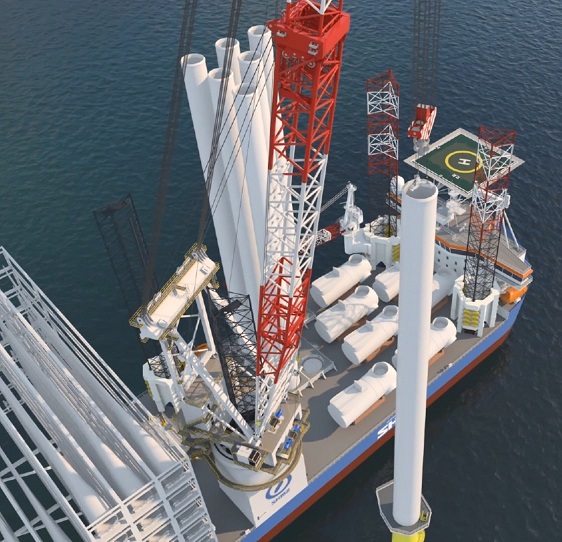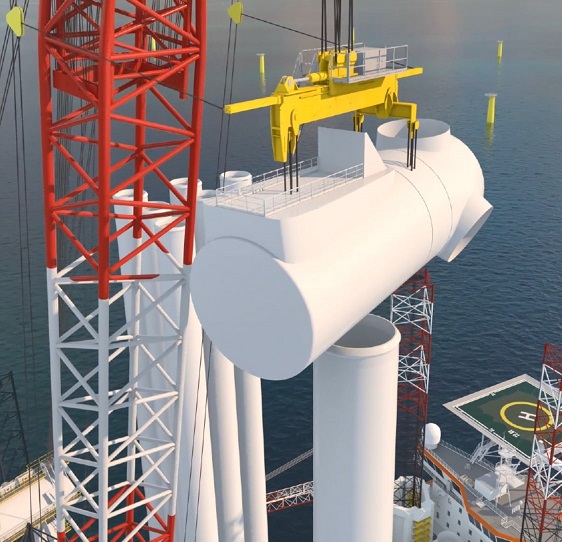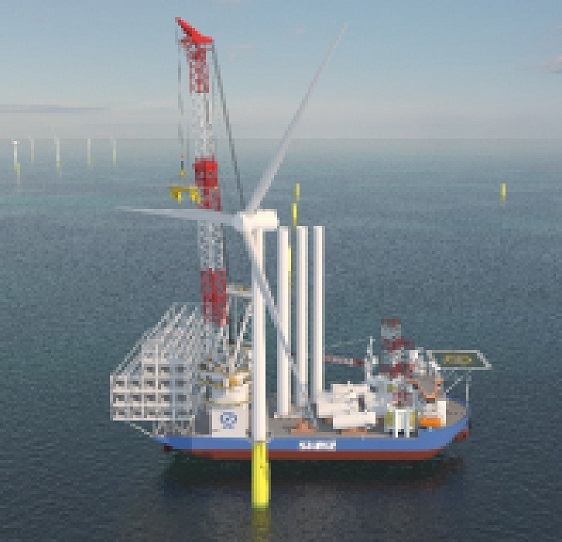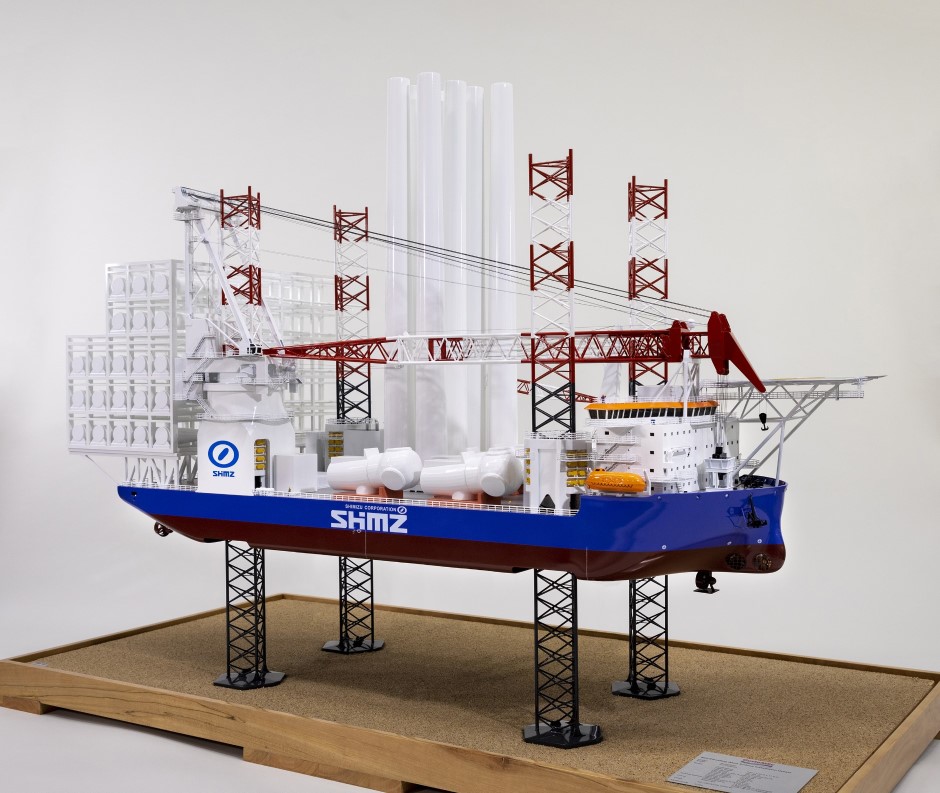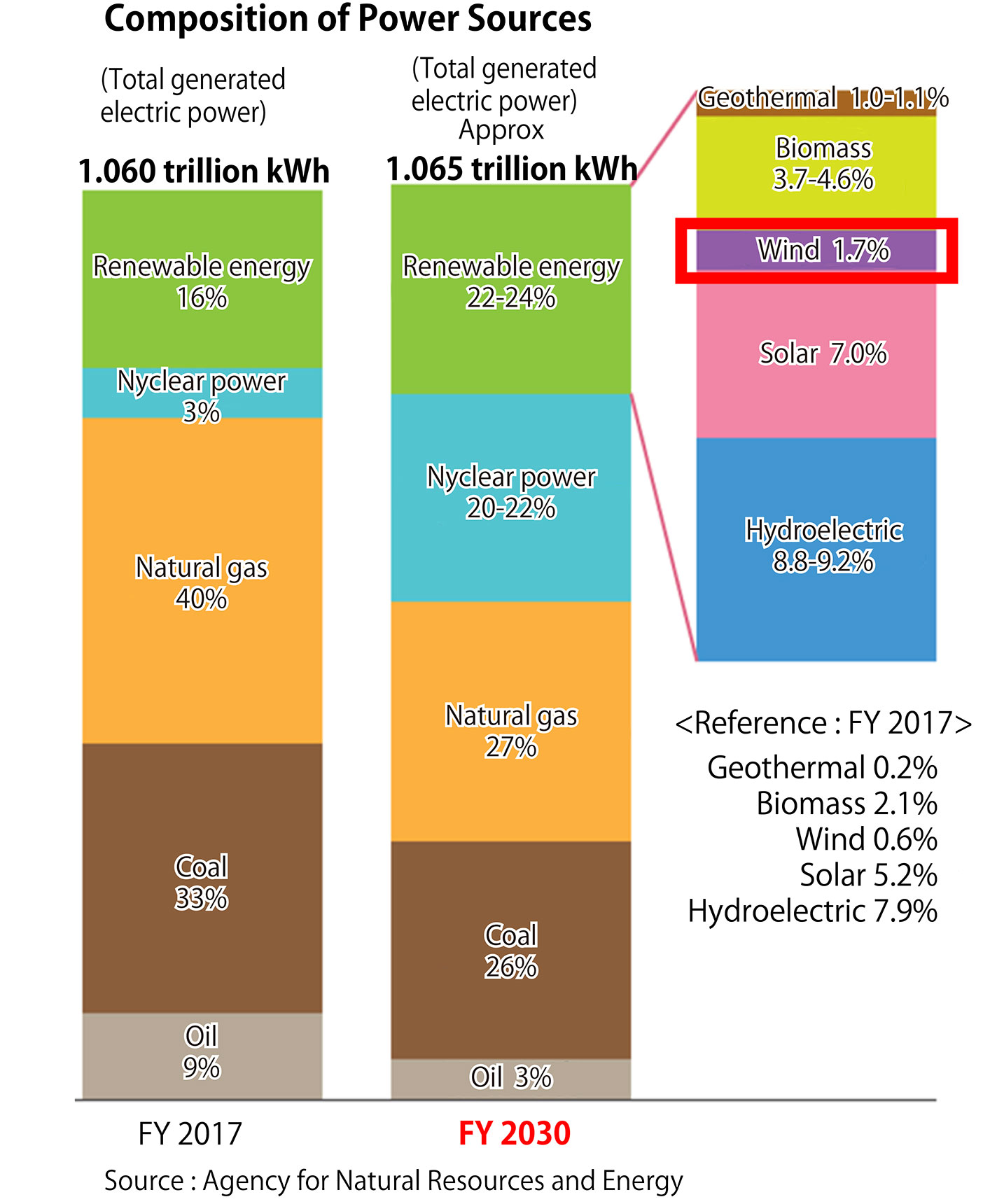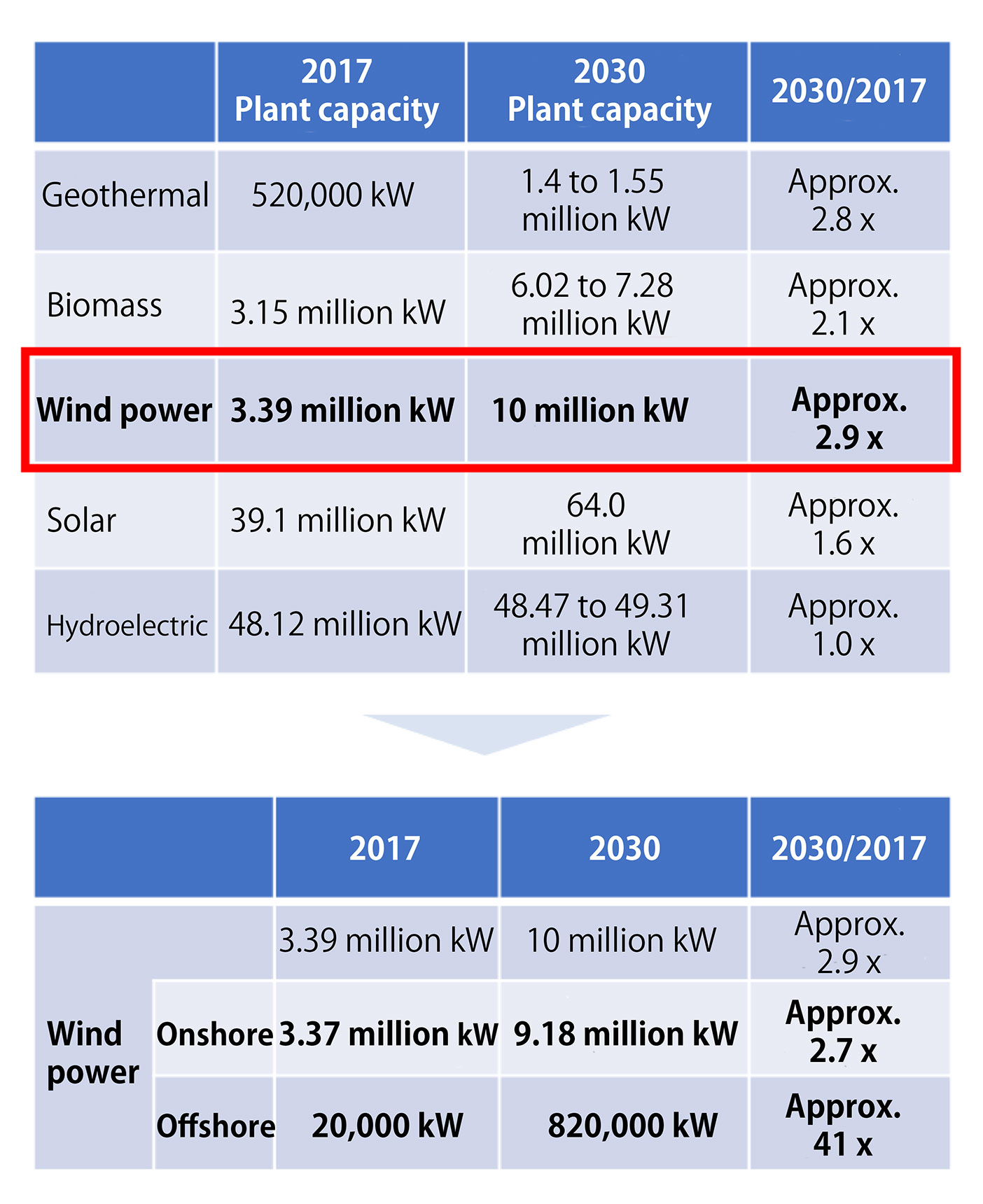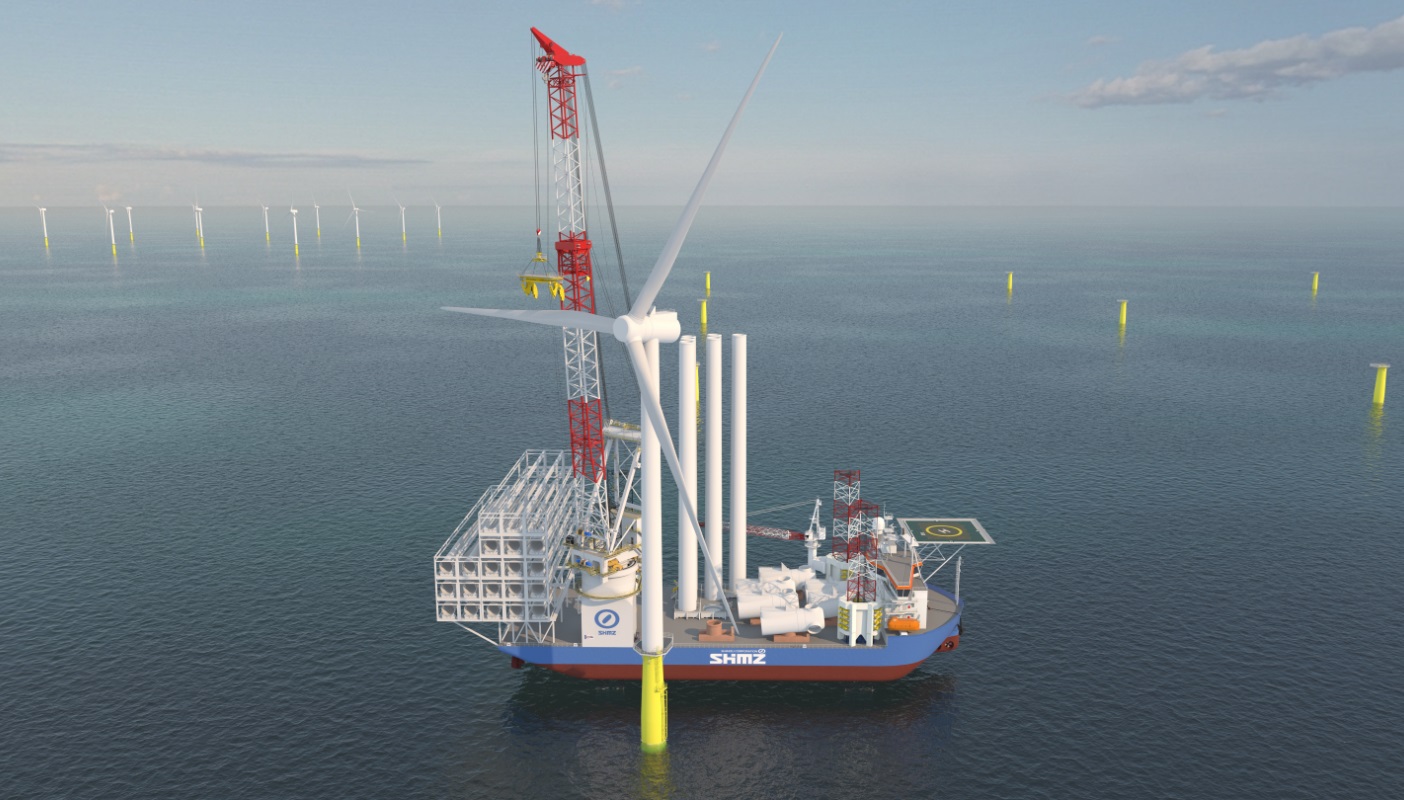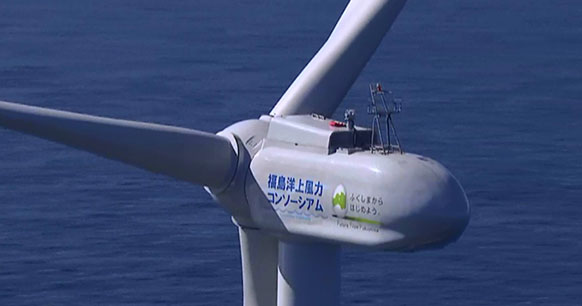
A dream for renewable energy Embarking on construction of one of the world largest self-propelled SEP Vessel
Offshore wind farms are a highly promising form of renewable energy from the viewpoint of power generation capacity and stability.
There are two types of offshore wind farm: The fixed bottom type in which the foundation is embedded in the seabed, and the floating type in which the wind turbine is mounted on a structure that floats on the surface of the sea. A SEP (self-elevating platform) vessel is used to construct large fixed wind turbines.
Shimizu has begun construction of one of the world largest self-propelled SEP vessel, which has the capacity to build large wind turbines, even as large as the 12 MW.
Construction can continue unaffected, even in high wave conditions
The SEP vessel will be 142 m long and 50 m wide, with a gross tonnage of 28,000 tons. The main crane will have a lifting capacity of 2,500 tons and a maximum lifting height of 158 m, which is among the largest in capacity in the world. It is scheduled for completion in October 2022.


SEP is an abbreviation for Self-Elevating Platform and refers to a vessel that has a self-elevating working platform. Once the vessel reaches its destination, the four legs are embedded into seabed and the vessel hull is jacked up above the sea surface. It can operate at water depths ranging from 10 to 65 m and is recognized for its ability to remain stable and perform construction even in high-wave conditions when the ocean is rough.
Because the SEP vessel is self-propelled, there is no need to charter a tugboat and this makes it possible to realize efficient construction. In Europe, it is common to use such self-propelled vessels for construction.
The procedure for constructing an offshore wind turbine is to first build the foundation. The tower, nacelle (engine), and blades are then loaded and transported to the construction site by the SEP vessel, and installed to the foundation.
Procedure for constructing a fixed bottom offshore wind turbine using SEP vessel
One of the main characteristics of the SEP vessel that Shimizu is building is its ability to transport a large volume of materials in one trip. The components for seven 8 MW wind turbines or three 12 MW wind turbines can be loaded all at once. In terms of estimated construction time, this means that it can construct seven 8 MW wind turbines in 10 days and three 12 MW wind turbines in five days. This represents reduced construction period by roughly 50% compared to conventional working vessels.
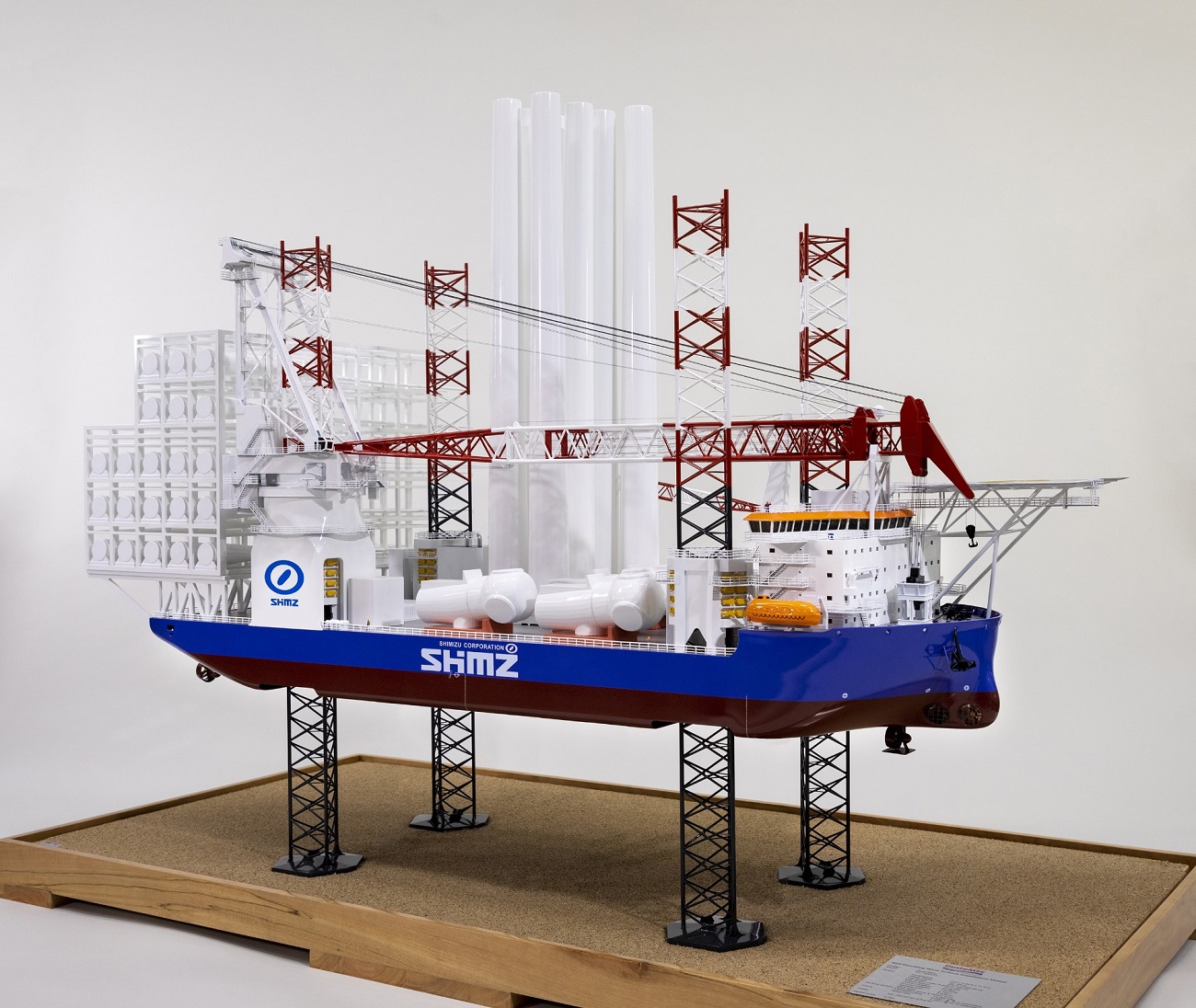
The potential of offshore wind farms in Japan, which is surrounded by the ocean
The 5th Basic Energy Plan for Japan announced in July 2018 set the goal of achieving an energy mix target. To achieve that target, the percentage of power generated by renewable energy must be raised to 22-24%.
In 2018, renewable energy accounted for 17.4% of total power generated in Japan. Broken down by energy type, 7.8% was hydroelectric, 6.5% solar, 0.7% wind power, and 2.2% from a combination of biomass and geothermal power generation. Of these, hydroelectric, solar, and wind power are capable of generating large amounts of power. Hydroelectric and solar power have already been developed in nearly all suitable locations, and wind power is said to have the highest potential for growth.
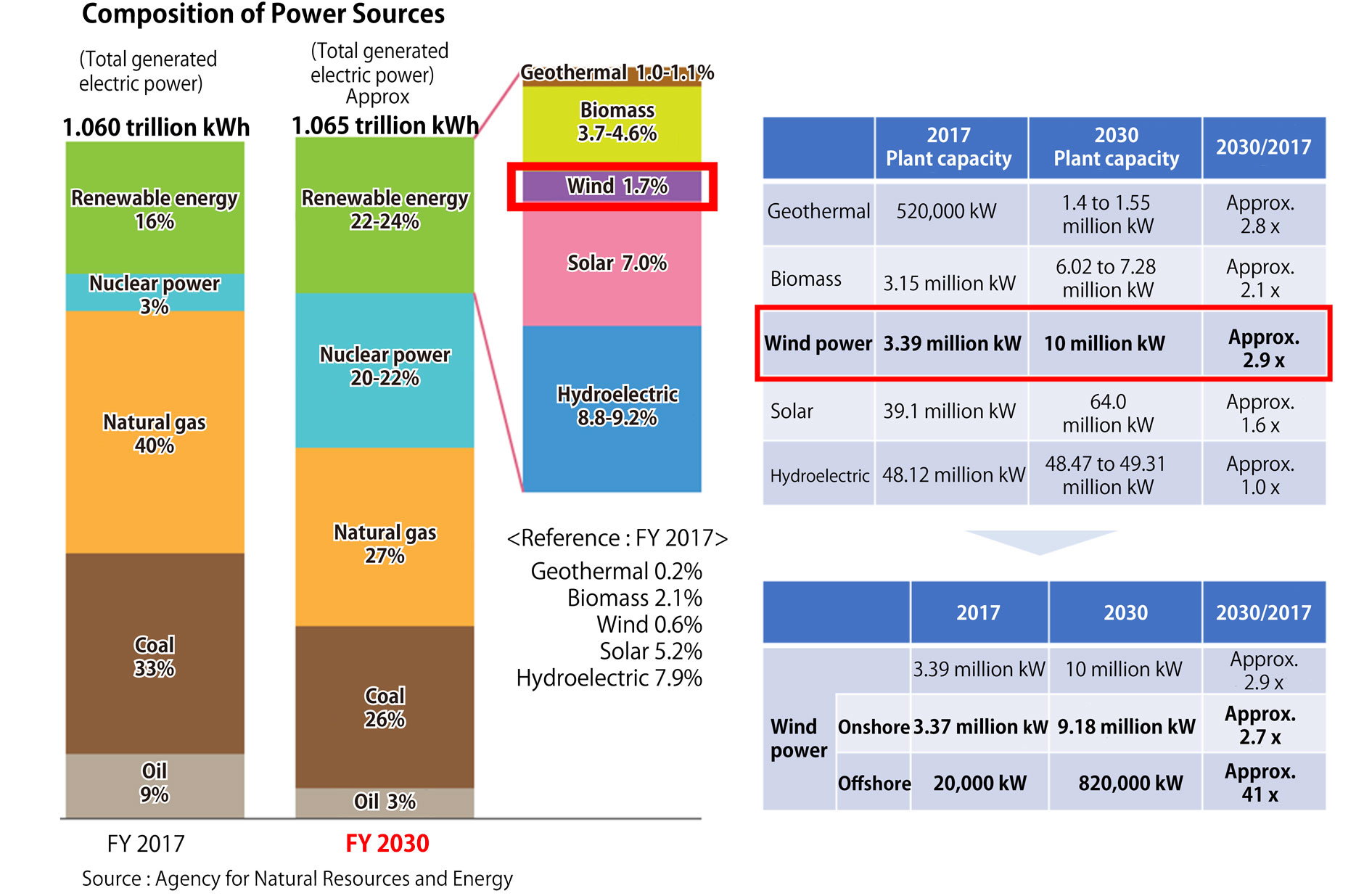
In wind power, offshore wind farms are attracting expectations in addition to onshore wind farms.
In Europe, offshore wind power generation has proliferated since the year 2000 and 18.5 GW in offshore wind power generation capacity has already been installed. This is equivalent to more than five times Japan’s total wind power generation capacity.
Japan, which is surrounded by the ocean in all four directions, is also seen to have high potential for offshore wind farms equivalent to that of Europe. Shimizu has also already provided its expertise in construction by participating in the Fukushima Offshore Wind Consortium’s Fukushima Floating Offshore Wind Farm Demonstration Project,which is located about 20 km off the coastal town of Naraha, in Fukushima.
Shimizu decide to Invest that foresee demand for large wind turbines
The Act of Promoting Utilization of Sea Areas in Development of Power Generation Facilities Using Maritime Renewable Energy Resources, called the New Offshore Power Act, was passed in November 2018 and enacted in April 2019 in Japan. Selected power producers under the act can hold rights to ocean areas designated as promotional areas by the government for purposes of wind power generation for a maximum of 30 years.
This is expected to spur full-scale plans to build offshore wind farms in Japan.
A total of 11 areas were already designated as “promising areas” for advance development of offshore wind farms in July 2019. These include four areas: one off the coast of the city of Noshiro, the town of Mitane, and the city of Oga in Akita Prefecture, one off the coast of the city of Yurihonjo in Akita Prefecture, one off the coast of the city of Choshi in Chiba Prefecture, and one off the coast of the city of Goto in Nagasaki Prefecture.
In terms of profitability, offshore wind farms in Japan need to construct turbines of the 8 MW or larger. The increasing size of wind turbines has also made it necessary to use cranes of the 2,000-ton class or larger to construct the foundation. However, Japan has not had a working vessel capable of constructing such large wind turbines up to now. We could not simply lease the vessel from Europe even if we wanted to, due to the high local demand for these large working vessels. We need to build our own vessel to contract the construction of wind farms responsibly.
Shimizu aiming to top market share in wind power
Based on the New Offshore Power Act, it will be anticipated first designation of the ocean areas by the end of FY2019 and selected power producers in FY2020. The construction of a series of wind farms with large turbines will probably begin from 2023 onward.
Shimizu aiming to top market share of the offshore wind farm construction by its SEP vessel capable of reliable and efficient construction of large wind turbines. This market is estimated to grow to over five trillion yen.
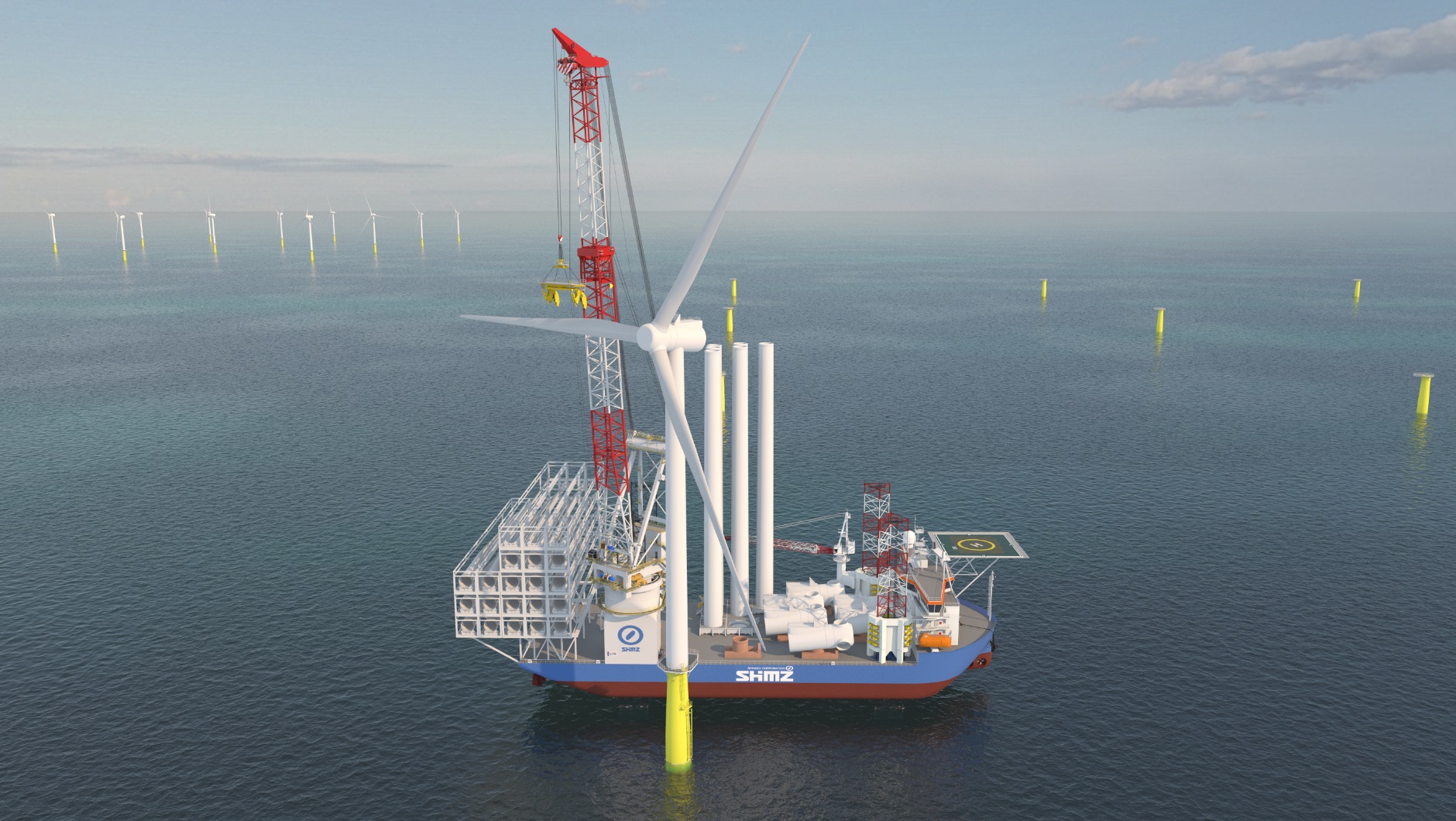
- News Release:JERA and Shimizu Conclude an MOU Concerning Collaboration in the Offshore Wind Power Generation Business
- News Release:Shimizu Begins Construction of the World’s Largest Self-Propelled SEP (Self-Elevating Platform) Vessel
- “The Site” Photo Gallery:[No.21] Construction of the Self-Propelled SEP (Self-Elevating Platform) Vessel
The information posted here is the current information on February 3, 2020.
Please be aware that this information may have changed by the time you view it.

